-
 Bitcoin
Bitcoin $117300
1.93% -
 Ethereum
Ethereum $3866
5.21% -
 XRP
XRP $3.109
3.81% -
 Tether USDt
Tether USDt $1.000
0.01% -
 BNB
BNB $781.5
1.52% -
 Solana
Solana $173.0
2.95% -
 USDC
USDC $0.9998
0.00% -
 Dogecoin
Dogecoin $0.2181
6.31% -
 TRON
TRON $0.3403
0.93% -
 Cardano
Cardano $0.7683
3.91% -
 Hyperliquid
Hyperliquid $40.08
5.09% -
 Sui
Sui $3.742
7.38% -
 Stellar
Stellar $0.4152
4.69% -
 Chainlink
Chainlink $18.40
10.03% -
 Bitcoin Cash
Bitcoin Cash $580.6
2.21% -
 Hedera
Hedera $0.2543
4.25% -
 Ethena USDe
Ethena USDe $1.001
-0.01% -
 Avalanche
Avalanche $22.94
3.52% -
 Litecoin
Litecoin $121.8
2.24% -
 UNUS SED LEO
UNUS SED LEO $8.955
-0.41% -
 Toncoin
Toncoin $3.330
3.03% -
 Shiba Inu
Shiba Inu $0.00001270
2.97% -
 Uniswap
Uniswap $10.34
6.42% -
 Polkadot
Polkadot $3.805
3.86% -
 Dai
Dai $1.000
0.01% -
 Bitget Token
Bitget Token $4.429
1.80% -
 Cronos
Cronos $0.1495
4.65% -
 Monero
Monero $255.6
-9.08% -
 Pepe
Pepe $0.00001096
4.40% -
 Aave
Aave $282.9
7.85%
What is Ethereum and how does it relate to NFTs?
Ethereum enables smart contracts and NFTs through its decentralized blockchain, with ETH powering transactions and gas fees ensuring network security.
Aug 08, 2025 at 12:29 am
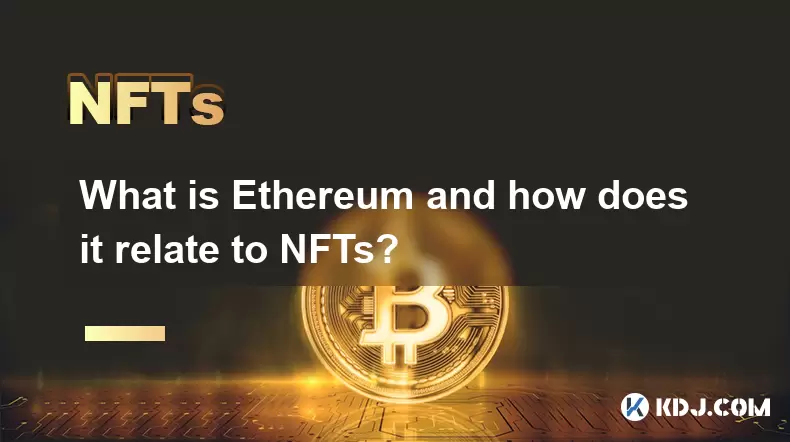
Understanding Ethereum: A Decentralized Platform for Smart Contracts
Ethereum is a decentralized, open-source blockchain platform that enables developers to build and deploy smart contracts and decentralized applications (dApps). Unlike Bitcoin, which primarily functions as a digital currency, Ethereum’s primary purpose extends beyond simple value transfer. It provides a programmable environment where code can execute automatically when predefined conditions are met. This functionality is powered by Ethereum Virtual Machine (EVM), which runs on every node in the network, ensuring consistency and security across the system.
The native cryptocurrency of the Ethereum network is called Ether (ETH). It serves as the fuel for executing operations on the network, commonly referred to as gas fees. Whenever a user interacts with a smart contract or sends tokens, they must pay gas in ETH. These fees compensate validators (in the current proof-of-stake model) for their computational work. The transition from proof-of-work to proof-of-stake through The Merge in 2022 significantly reduced energy consumption and redefined how Ethereum secures its network.
Smart Contracts and Their Role in Ethereum Ecosystem
At the core of Ethereum’s innovation lies the smart contract—self-executing agreements written in code. Once deployed on the blockchain, these contracts operate without intermediaries and cannot be altered. They automatically enforce rules and execute actions, such as transferring funds or updating records, when specific conditions are fulfilled.
Developers write smart contracts using programming languages like Solidity or Vyper, which are then compiled and deployed to the Ethereum blockchain. Once live, these contracts can be interacted with by users or other contracts. For instance, a smart contract might govern a crowdfunding campaign, releasing funds only if a target is reached within a certain timeframe. The immutability and transparency of these contracts make them ideal for trustless interactions.
The widespread adoption of smart contracts has led to the creation of decentralized finance (DeFi) platforms, prediction markets, and governance systems. But one of the most visible applications of Ethereum’s smart contract capability is in the creation and management of non-fungible tokens (NFTs).
What Are NFTs and How Are They Built on Ethereum?
Non-fungible tokens (NFTs) are unique digital assets verified using blockchain technology. Unlike cryptocurrencies such as ETH, which are fungible and interchangeable, each NFT has distinct properties and cannot be exchanged on a one-to-one basis. They are commonly used to represent ownership of digital art, collectibles, virtual real estate, and in-game items.
The majority of NFTs are built on the Ethereum blockchain using established token standards. The most widely adopted standard is ERC-721, which defines how NFTs are created, transferred, and tracked. Each ERC-721 token has a unique identifier and is linked to a specific Ethereum address, ensuring provable ownership. A newer standard, ERC-1155, allows for both fungible and non-fungible tokens within the same contract, improving efficiency for platforms managing multiple asset types.
When an artist mints an NFT on Ethereum, they deploy a smart contract that adheres to one of these standards. This contract records metadata—such as the artwork’s name, description, and file location—on the blockchain. The actual digital file is usually stored off-chain (e.g., on IPFS), while the NFT acts as a verifiable certificate of ownership.
How to Mint an NFT on Ethereum: Step-by-Step Guide
Creating an NFT on Ethereum involves several technical and operational steps. Users must prepare their digital file, choose a marketplace, and interact with the blockchain.
- Ensure you have a compatible crypto wallet such as MetaMask installed and connected to the Ethereum network.
- Fund your wallet with sufficient ETH to cover gas fees, which vary depending on network congestion.
- Navigate to an NFT marketplace like OpenSea, Rarible, or Foundation and connect your wallet.
- Click on the option to create or mint a new item, upload your digital file (image, video, audio, etc.), and fill in metadata such as title, description, and properties.
- Choose whether your NFT follows the ERC-721 or ERC-1155 standard—this is often handled automatically by the platform.
- Confirm the transaction in your wallet, which will initiate the smart contract deployment. You may need to approve two transactions: one for contract creation and one for listing.
- After confirmation, your NFT will be recorded on the Ethereum blockchain and visible in your collection.
Minting can be done "lazy minted" on some platforms, meaning the NFT is not immediately recorded on-chain. Instead, the buyer pays the gas fee upon purchase. True on-chain minting, however, registers the NFT immediately and is more secure.
Buying, Selling, and Transferring NFTs on Ethereum
Acquiring an NFT on Ethereum requires interaction with decentralized marketplaces. Users must connect their wallets and ensure they have enough ETH for the purchase price and gas fees.
- Visit a marketplace like OpenSea and search for the desired NFT.
- Review the item’s details, including ownership history, price, and associated smart contract.
- Click Buy Now or place a bid if it’s an auction.
- Confirm the transaction in your wallet. The ETH will be transferred to the seller, and the NFT will be sent to your wallet address.
- To sell an NFT, list it for a fixed price or auction. Set royalty percentages if supported by the platform—this allows you to earn a percentage on future sales.
- Transferring an NFT to another address involves initiating a transfer function in your wallet or on the marketplace, specifying the recipient’s Ethereum address.
Every transaction is recorded on the Ethereum blockchain, ensuring transparency and permanence. Ownership changes are irreversible once confirmed.
Ethereum Gas Fees and NFT Transactions
Every interaction with the Ethereum blockchain, including NFT minting, buying, and transferring, incurs gas fees. These fees are paid in ETH and compensate validators for processing and securing transactions. Gas fees fluctuate based on network demand—during high activity, such as popular NFT drops, fees can spike significantly.
Users can adjust the gas price they are willing to pay, affecting transaction speed. Higher gas prices prioritize transactions, leading to faster confirmations. Tools like Etherscan Gas Tracker or MetaMask’s built-in estimator help users choose optimal fees.
Layer 2 solutions like Polygon (which is compatible with Ethereum) offer lower-cost alternatives for NFT transactions. While these operate on sidechains, they maintain security through periodic anchoring to the Ethereum mainnet. Some NFT platforms support cross-chain bridging, allowing users to move NFTs between Ethereum and Layer 2 networks.
Frequently Asked Questions
Can I create an NFT without paying gas fees on Ethereum?
Yes, through lazy minting on platforms like OpenSea. The NFT is not recorded on the blockchain until someone purchases it, at which point the buyer pays the gas fee. However, this method relies on the platform’s infrastructure and may carry counterparty risk.
How do I verify the authenticity of an NFT on Ethereum?
Check the NFT’s smart contract address on a blockchain explorer like Etherscan. Confirm that it matches the official contract of the collection. Review transaction history and ownership records to ensure legitimacy.
What happens if I lose access to my wallet with NFTs?
If you lose your private keys or recovery phrase, you permanently lose access to your wallet and all assets inside, including NFTs. There is no central authority to recover them. Always back up your recovery phrase securely.
Are all NFTs on Ethereum valuable?
No. While some NFTs sell for millions, most have little to no market value. Scarcity, creator reputation, community engagement, and utility influence value. Many NFTs never sell after minting.
Disclaimer:info@kdj.com
The information provided is not trading advice. kdj.com does not assume any responsibility for any investments made based on the information provided in this article. Cryptocurrencies are highly volatile and it is highly recommended that you invest with caution after thorough research!
If you believe that the content used on this website infringes your copyright, please contact us immediately (info@kdj.com) and we will delete it promptly.
- Bitcoin Reserve, Gold Revaluation, Congress Considers: A New Era for US Financial Strategy?
- 2025-08-08 04:30:12
- KAITO's Momentum: Can It Reclaim Support Amidst Social Media Scrutiny?
- 2025-08-08 04:30:12
- Pi Coin's dApp and AI Potential: Building a Decentralized Future
- 2025-08-08 02:30:12
- Ruvi AI Takes the Lead: Outshining Dogecoin on CoinMarketCap
- 2025-08-08 02:50:12
- Cryptos Under $1: Is Ripple Still the King?
- 2025-08-08 03:50:12
- Cold Wallet, Bonk Price, ICP Price: Navigating the Crypto Landscape in 2025
- 2025-08-08 03:56:12
Related knowledge
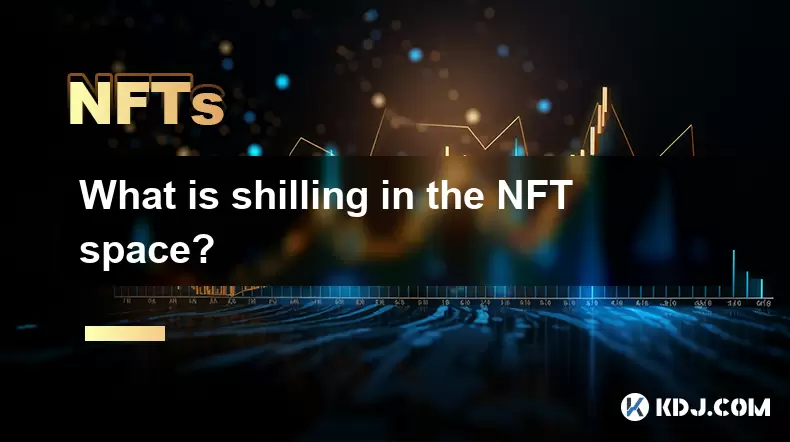
What is shilling in the NFT space?
Aug 08,2025 at 02:14am
Understanding the Concept of Shilling in the NFT EcosystemIn the NFT space, the term shilling refers to the act of aggressively promoting a specific d...
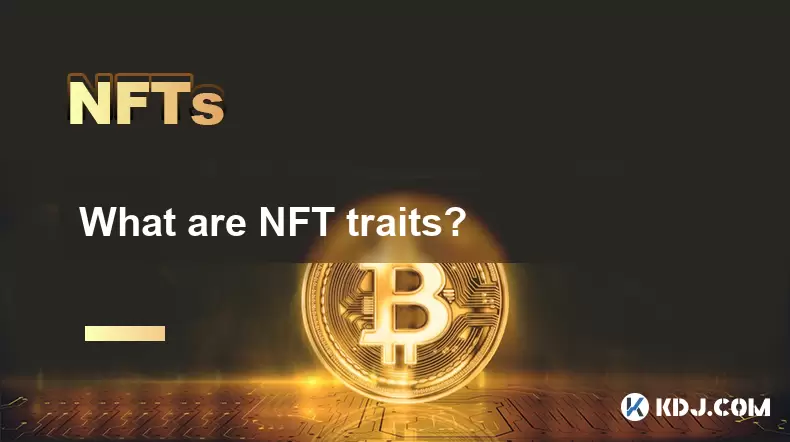
What are NFT traits?
Aug 07,2025 at 10:35pm
Understanding the Concept of NFT TraitsNFT traits define the unique characteristics of a non-fungible token, particularly within collections such as p...
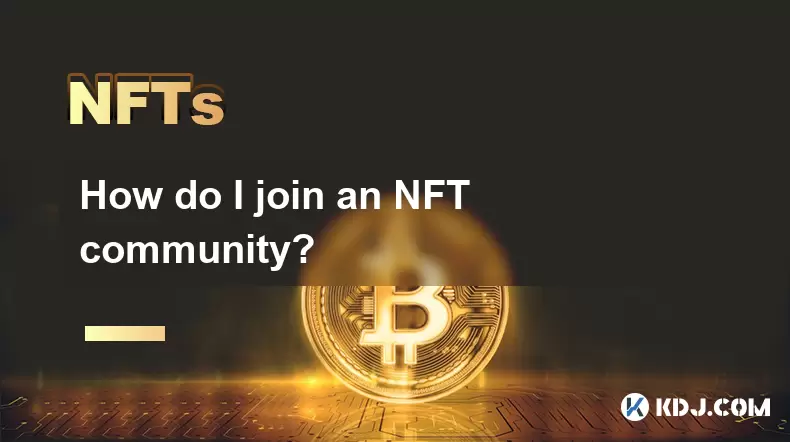
How do I join an NFT community?
Aug 07,2025 at 10:21pm
Understanding the Purpose of NFT CommunitiesNFT communities are digital ecosystems built around specific non-fungible token projects, artists, or broa...

What is Ethereum and how does it relate to NFTs?
Aug 08,2025 at 12:29am
Understanding Ethereum: A Decentralized Platform for Smart ContractsEthereum is a decentralized, open-source blockchain platform that enables develope...
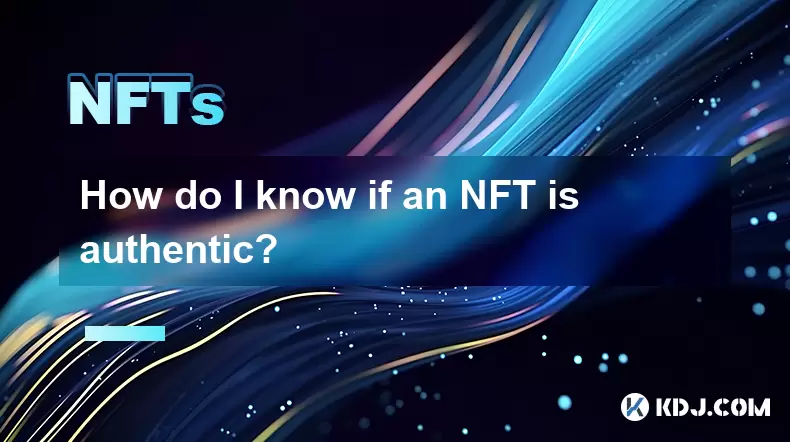
How do I know if an NFT is authentic?
Aug 07,2025 at 10:14pm
Understanding NFT Authenticity and Blockchain VerificationWhen assessing whether an NFT is authentic, the foundation lies in understanding how blockch...
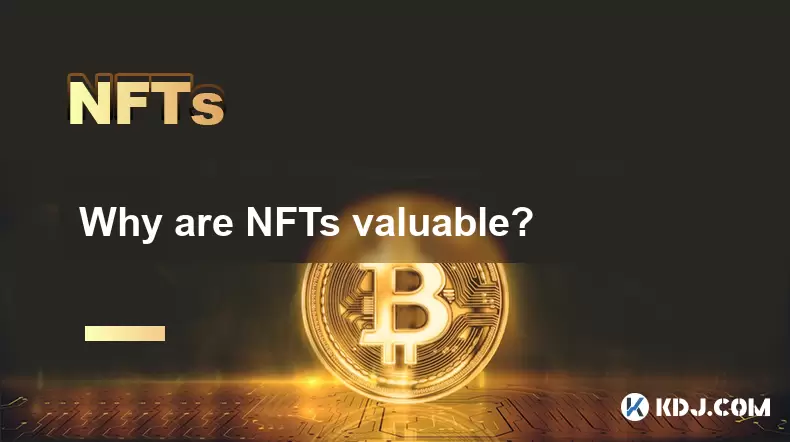
Why are NFTs valuable?
Aug 08,2025 at 12:15am
Understanding the Concept of NFTsNFTs, or Non-Fungible Tokens, are unique digital assets verified using blockchain technology. Unlike cryptocurrencies...

What is shilling in the NFT space?
Aug 08,2025 at 02:14am
Understanding the Concept of Shilling in the NFT EcosystemIn the NFT space, the term shilling refers to the act of aggressively promoting a specific d...

What are NFT traits?
Aug 07,2025 at 10:35pm
Understanding the Concept of NFT TraitsNFT traits define the unique characteristics of a non-fungible token, particularly within collections such as p...

How do I join an NFT community?
Aug 07,2025 at 10:21pm
Understanding the Purpose of NFT CommunitiesNFT communities are digital ecosystems built around specific non-fungible token projects, artists, or broa...

What is Ethereum and how does it relate to NFTs?
Aug 08,2025 at 12:29am
Understanding Ethereum: A Decentralized Platform for Smart ContractsEthereum is a decentralized, open-source blockchain platform that enables develope...

How do I know if an NFT is authentic?
Aug 07,2025 at 10:14pm
Understanding NFT Authenticity and Blockchain VerificationWhen assessing whether an NFT is authentic, the foundation lies in understanding how blockch...

Why are NFTs valuable?
Aug 08,2025 at 12:15am
Understanding the Concept of NFTsNFTs, or Non-Fungible Tokens, are unique digital assets verified using blockchain technology. Unlike cryptocurrencies...
See all articles

























































































